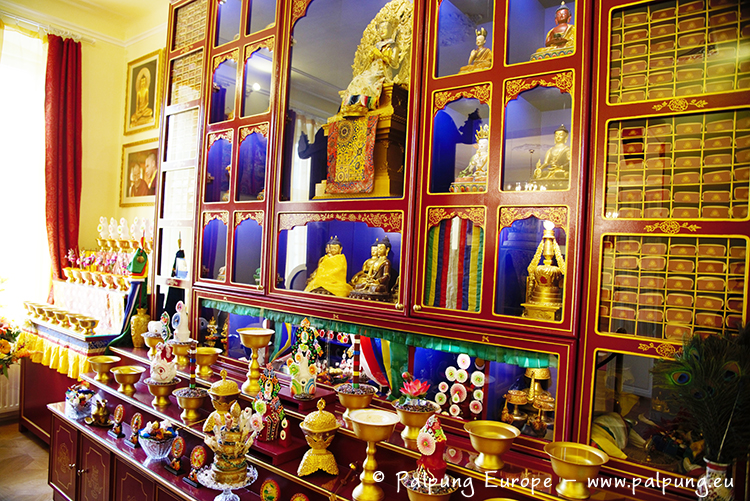Practising Buddhadharma
Practice is the center piece of the entire Buddhist path, it is the means by which we ourselves can finally become buddha ourselves through our active implementation and continuous dedication whilst Buddhist philosophy is an auxiliary means to prepare us to practice. The practical application of the teachings is held especially dear in the Kagyu lineage.
More precicely, we need a firm basis in view (philosophy), meditation (practical application of specific methods) and action (postmeditation, our daily lives) in order to develop on our path.
Having received the formal refuge in a ceremony by a master of an unbroken lineage, we become part of the lineage of blessings of Buddha Shakyamuni. Hence we receive a new name, the so-called refuge name which is not used in daily life but in various religious ceremonies.
From now on, we are Buddhists and receive particular instructions for spiritual practice and individual maturation from the refuge teacher, practice prayers and different ways of meditation on basis of the right view and the right conduct, the Four Noble Truths and the Noble Eightfold Path, forming the coare of all three main vehickles of the Buddhadharma’s path.
Basically and simply speaking, we can distinguish between lay practitioners and monastics.
Lay practitioners continue with their regular life and put effort into continuing their lifes according to Buddhist ethics. They practice within one of the three vehicles. There is possibility to upgrade their vows into the so-called lay precepts.
Monastic practitioners are those who either received the ordination of initial (Tibetan getsul/ma) or full ordination (Tib. gelong/ma, sanskrit: bikshu/bikshuni), living accordingly. While those ordained who hold the intial vows follow 36 rules, Gelongs (male fully ordained) follow more than 250 rules and Gelongmas (female fully ordained) little less than 350 rules. They also practice within one of the three vehicles.
Precepts within Buddhism
Refuge precepts: can be received by both lay practitioners and monastics. They form the basis for any kind of spiritual practice within Buddhism.
Monastic precepts: monks and nuns holding initial and full ordination
Lay precepts: five in number, for lay practitioners as indicated by the name
Precepts for one day: for both lay practitioners and monastics
Bodhisattva vows: for both lay practitioners and monastics. They are vows of the Mahayana.
Vajrayana committments: for both lay practitioners and monastics.







